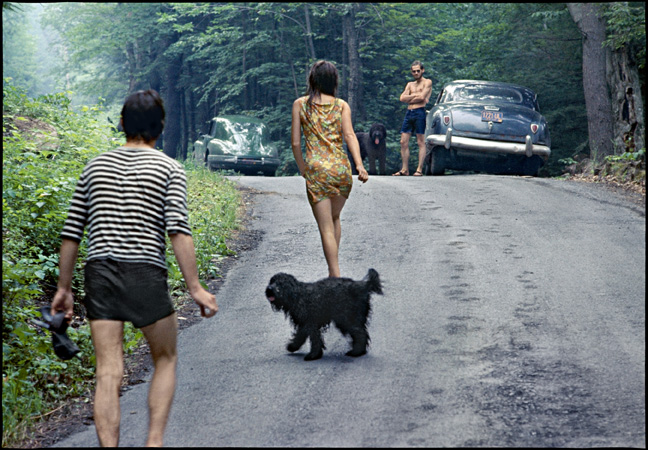Written by Jacob Brookman

A new exhibition at Proud Camden showcases the work of rock photographer Elliott Landy through 1968-69 as he documented The Band during the recording of their first two albums. Originally Bob Dylan’s backing band, the five-piece have come to be seen as essential “musician’s musicians” whose multi-instrumental originators clashed viciously during their eight-year professional relationship.
The Band are a curious beast. World-class session players who specialised in Americana despite being four-fifths Canadian, they inspire the kind of reverence among rock musicians that is generally reserved for more obviously virtuosic players.
They are probably best known amongst younger audiences for their farewell concert film, The Last Waltz – directed by Martin Scorsese and featuring a panoply of stars, including Joni Mitchell, Van Morrison, Eric Clapton and Bob Dylan himself.
Thus, their eight-year period of touring and recording together is exceptional for its success – they are a group apparently without a de jure leader, and whose songwriting is too-often pedestrian, yet whose appeal rests on sensational arrangement, cogency and extemporisation. They were also capable of striking musical invention that could go under the radar amidst the familiar tropes of folksy roots-rock.

Consequently, it is the human relationships at the heart of The Band that give Landy’s photographs added appeal to longtime fans. Much has been made of the rift that grew between supposed arranger-in-chief Robbie Robertson and late drummer Levon Helm after Robertson left the band in 1976. Indeed – the idea that Robertson was the bandleader in itself was disputed in Helm’s 1993 autobiography, where Helm claimed that Robertson conspired with Last Waltz director Martin Scorsese to make Robertson appear to be the most important member of the group.
But despite no obvious frontman, this is a band bursting with character – as demonstrated by Landy’s imagery. And they were in good company: Probably their closest spiritual cousins would be folk supergroups Fleetwood Mac & Crosby, Stills, Nash & Young, who also divided lead vocal duties among the members – and whose explosive interpersonal relationships provided a compelling lyrical narrative for audiences. Somewhat inevitably, it is the harmonic collaboration – the blending of different voices – within these bands that makes their music so very special.
No more so than in The Band’s seminal track ‘The Weight’ – often considered essential listening to any rock bandleader who cares about vocal arrangement.

There are also more personal photographs in the collection, such as a fascinating shot of Rick & Grace Danko approaching Levon Helm after a swim at the Woodstock’s Millstream in 1968. The image is austere and sexy, carefully organised yet formally undermined by the chaotic canine component. Levon himself looks sinister – creepy even – with his arms crossed and his sunglasses on, as he watches the young couple approach.
Elsewhere we see Landy’s exceptional eye for geometric composition. One particular image from the shoot for the cover of The Band’s eponymous album is bursting with intrigue and chiaroscuro gravity. The Band look focused, confident and poised. Again, there is no clear leader in the photo, and though Landy’s lighter features make him stand out, one could be forgiven for thinking that Rick Danko and Garth Hudson are the main creative partnership, in the middle-right.

The Band are completely of their time: A theoretical co-operative that thrived on creative equality, and Landy’s images give us this. But despite the pastoral fraternity of the music, there remains a very urbane competitiveness within The Band. It’s probably what made them so special, but possibly also what shook them apart.
